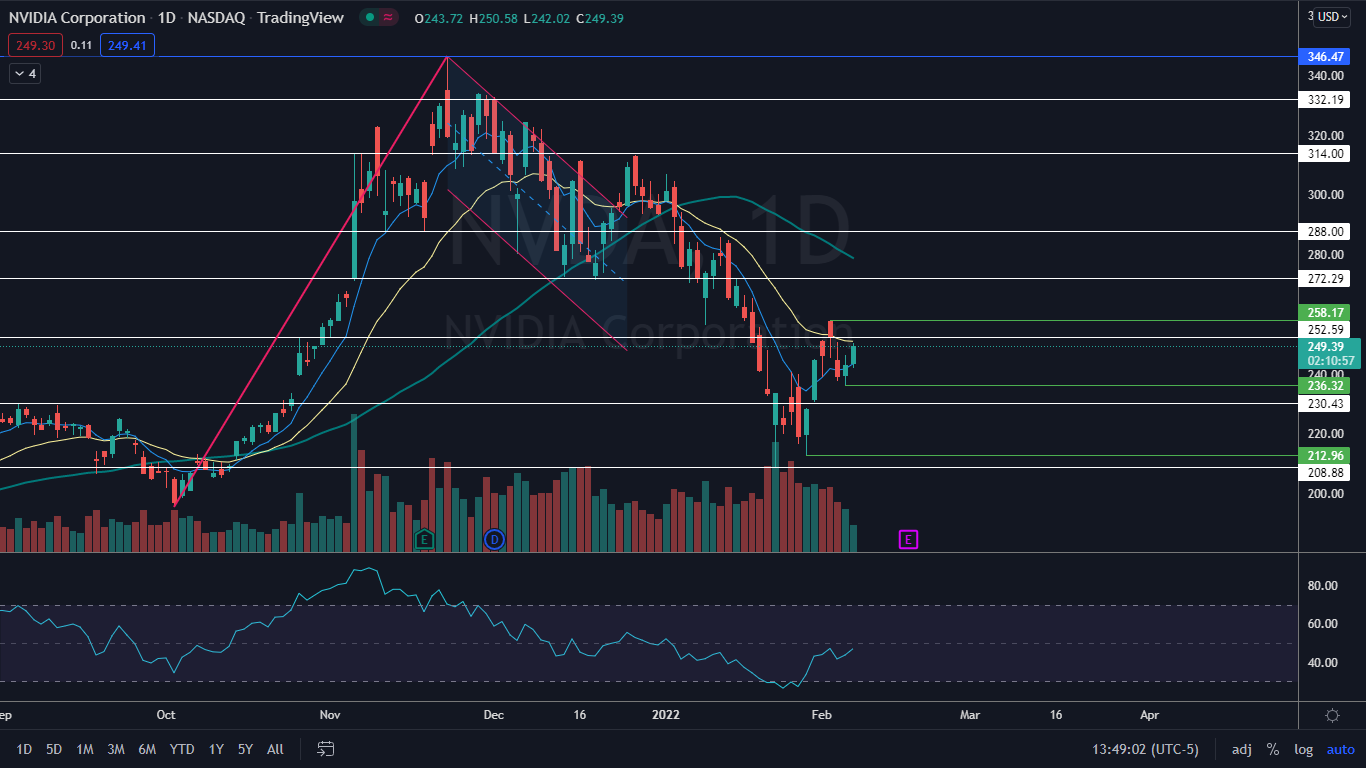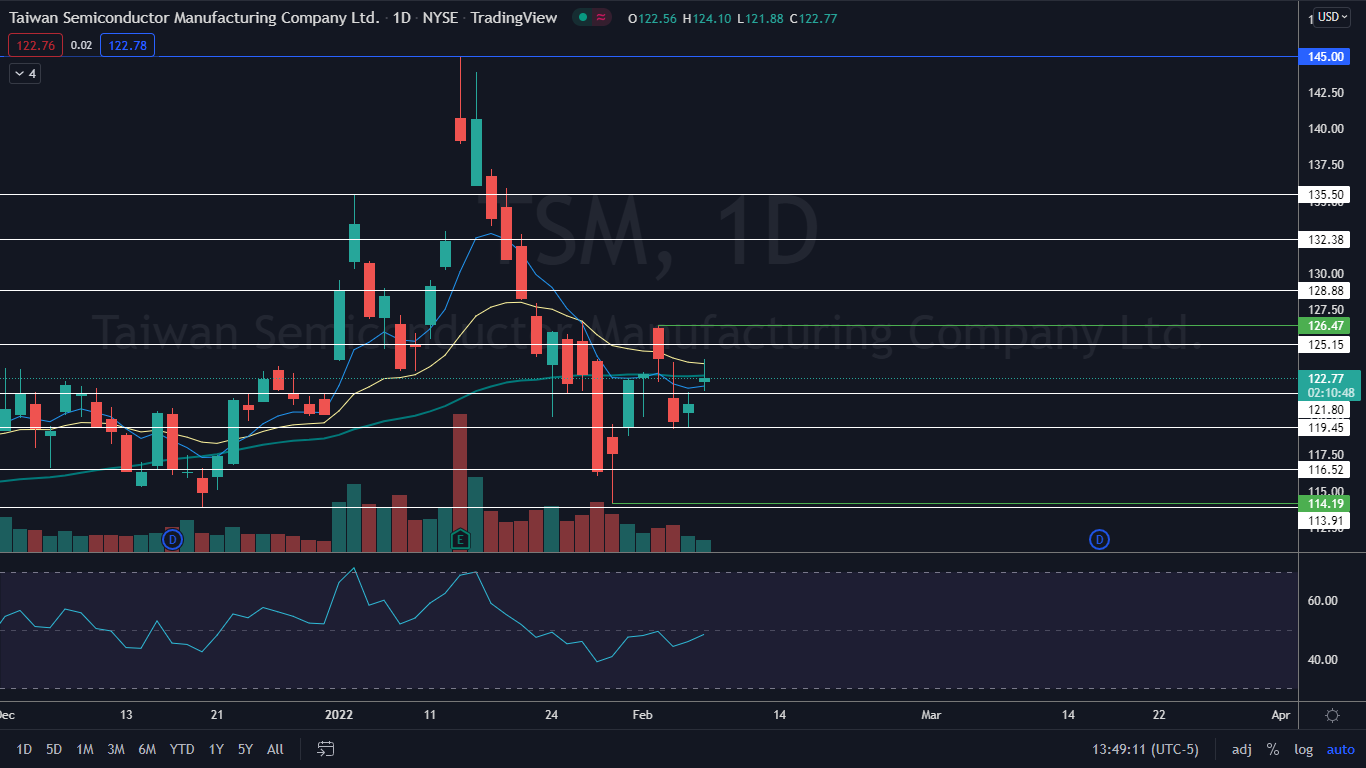NVIDIA Corporation and Taiwan Semiconductor Manufacturing Company Ltd. were each trading 1 percent higher on Monday despite the broad sector ETF SPDR S&P 500 consolidating with an inside bar pattern.
Both stocks have reached new all-time highs recently with Nvidia soaring to the $346.47 mark on Nov. 22 and Taiwan Semiconductor hitting a Jan. 13 high of $145. Since reaching their all-time highs both stocks have sold off, with Nvidia dropping 38.35 percent to reach a Jan. 28 low of $212.96 and on that same date Taiwan Semiconductors bounced up from a bottom at the 114.19 level, which represented a 21.25 percent decline.
While both semiconductor stocks have fallen lower, Nvidia and Taiwan Semiconductors have both printed reversal candles on their daily charts, which indicates higher prices may be on the horizon. Nvidia may have a potential political advantage, however, being a U.S. company because on Friday the U.S. House formally passed a China competition bill to increase chip production.
In the News
Taiwan Semiconductors printed a fourth-quarter earnings beat on Jan. 13 before the market opened, which caused the stock to soar 9.66 percent higher than the previous days’ close before the price action marked the top. The company reported earnings per share of $1.15 compared to the analyst estimate of $1.12.The Nvidia Chart
Nvidia is trading in a confirmed uptrend, with the most recent higher high printed on Feb. 2 at $258.17 and the most recent higher low of $236.32 formed on Friday.On Monday, Nvidia was attempting to break up over the 21-day exponential moving average and if the stock is able to complete the task and trade above the area for a period of time, the eight-day EMA will eventually cross above the 21-day, which would give bulls more confidence going forward.
Nvidia looked to be printing a bullish Marubozu candlestick, which could indicate higher prices will come on Tuesday. If that happens, it will likely cause the stock to print another higher high in its uptrend.
Nvidia has resistance above at $252.59 and $272.29 and support below at $230.43 and $208.88.

The Taiwan Semiconductor Chart
Taiwan Semiconductor may have reversed course into an uptrend when the stock printed a higher low on Feb. 3 near the $121 level. On Monday, the stock attempted to move up toward printing a higher high but failed due to weakness in the general markets.By early afternoon, Taiwan Semiconductor looked to be printing a doji candlestick, which indicates indecision. When a doji is found at the top of a trend it can indicate lower prices will follow.
If Taiwan Semiconductor is unable to make a new high on Tuesday there is a likelihood the stock may settle into a triangle but if it falls below the most recent higher low, a downtrend may be on the horizon.
Taiwan Semiconductor has resistance above at $125.15 and $128.88 and support below at $121.80 and $119.45.






